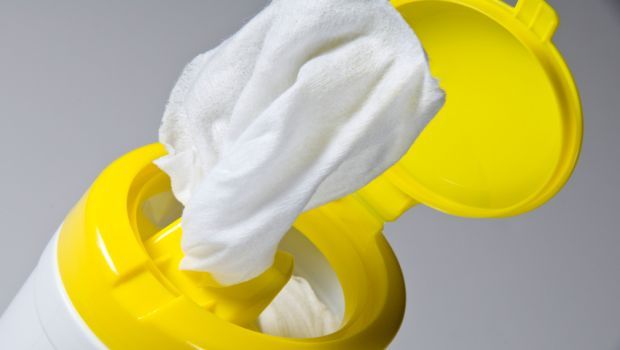The Benefits of Ready-to-Use Wipes
The traditional towel-and-bucket method of environmental cleaning is being replaced in many hospitals by ready-to-use disinfectant wipes. These pre-soaked disposable wipes are increasingly used for the disinfection of near-patient surfaces to prevent the spread of microorganisms and the emergence of nosocomial infections. This report explores the benefits of ready-to-use wipes as well as reviews the key factors that impact wipes' efficacy.

Issue Summary
The traditional towel-and-bucket method of environmental cleaning is being replaced in many hospitals by ready-to-use disinfectant wipes. These pre-soaked disposable wipes are increasingly used for the disinfection of near-patient surfaces to prevent the spread of microorganisms and the emergence of nosocomial infections. This report explores the benefits of ready-to-use wipes as well as reviews the key factors that impact wipes' efficacy.
Editor's Take
Compared to multiple-use towels (bucket method), typical sources of error -- such as the wrong dosage or repeated dipping of already used cloths into the use-solution -- can be avoided with disposable wipes.
Takeaways for Your Business
- Learn about a recent study exploring the benefits of ready-to-use wipes
- Discover the factors that impact the efficacy of wipes
- Review the cost factors associated with disposable wipes
Show, Tell, Teach: Elevating EVS Training Through Cognitive Science and Performance Coaching
April 25th 2025Training EVS workers for hygiene excellence demands more than manuals—it requires active engagement, motor skills coaching, and teach-back techniques to reduce HAIs and improve patient outcomes.
The Rise of Disposable Products in Health Care Cleaning and Linens
April 25th 2025Health care-associated infections are driving a shift toward disposable microfiber cloths, mop pads, and curtains—offering infection prevention, regulatory compliance, and operational efficiency in one-time-use solutions.
Vet IP Roundtable 2: Infection Control and Biosecurity Challenges in Veterinary Care
March 31st 2025Veterinary IPs highlight critical gaps in cleaning protocols, training, and biosecurity, stressing the urgent need for standardized, animal-specific infection prevention practices across diverse care settings.
Invisible, Indispensable: The Vital Role of AHRQ in Infection Prevention
March 25th 2025With health care systems under strain and infection preventionists being laid off nationwide, a little-known federal agency stands as a last line of defense against preventable patient harm. Yet the Agency for Healthcare Research and Quality (AHRQ) is now facing devastating cuts—threatening decades of progress in patient safety.